Related Research Articles
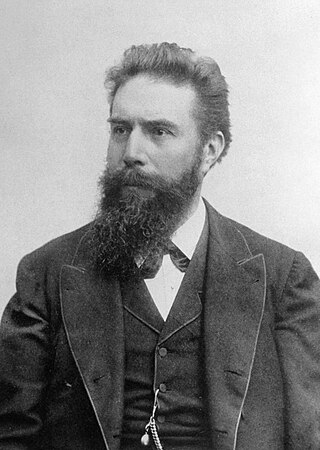
Wilhelm Conrad Röntgen was a German mechanical engineer and physicist, who, on 8 November 1895, produced and detected electromagnetic radiation in a wavelength range known as X-rays or Röntgen rays, an achievement that earned him the inaugural Nobel Prize in Physics in 1901. In honour of Röntgen's accomplishments, in 2004 the International Union of Pure and Applied Chemistry (IUPAC) named element 111, roentgenium, a radioactive element with multiple unstable isotopes, after him. The unit of measurement roentgen was also named after him.
The roentgen equivalent man (rem) is a CGS unit of equivalent dose, effective dose, and committed dose, which are dose measures used to estimate potential health effects of low levels of ionizing radiation on the human body.
The American Society of Radiologic Technologists (ASRT) is a professional membership association that serves medical imaging technologists, radiation therapists, and radiologic science students. The organization, located in Albuquerque, New Mexico provides its members with ongoing education and professional development opportunities.
In medicine, the Golden S sign is a sign seen on imaging of the chest that suggests a central lung mass or lung collapse. It was first described by Dr. Ross Golden (1889-1975) in 1925 in association with bronchial carcinoma, but it is also seen in metastatic cancer, enlarged lymph nodes, and collapse of the right upper lobe of the lung.

The roentgen or röntgen is a legacy unit of measurement for the exposure of X-rays and gamma rays, and is defined as the electric charge freed by such radiation in a specified volume of air divided by the mass of that air . In 1928, it was adopted as the first international measurement quantity for ionizing radiation to be defined for radiation protection, as it was then the most easily replicated method of measuring air ionization by using ion chambers. It is named after the German physicist Wilhelm Röntgen, who discovered X-rays and was awarded the first Nobel Prize in Physics for the discovery.

The American Journal of Roentgenology (AJR) is a monthly peer-reviewed journal that covers topics in radiology. It is published by the American Roentgen Ray Society (ARRS) and is based in Leesburg, VA. The current editor-in-chief is Andrew B. Rosenkrantz.
Herbert M. Parker was an English, and American immigrant, medical physicist. He was a pioneer of medical radiation therapy and radiation safety, known for introducing the roentgen equivalent physical (rep), the forerunner of the gray and the rad, and also the roentgen equivalent biological (reb), the forerunner of the rem and the sievert.
Eddy Clifford Jerman was an American inventor and an early expert in the techniques of medical radiography. In the years that followed the discovery of X-rays, Jerman was one of the first people to focus on the details that created quality X-ray images, such as exposure and positioning. He served as an examiner during the initial efforts to license personnel who took X-rays. He has been referred to as "the father of radiography".
Global radiology, a subspecialty of diagnostic radiology, comprises the study and practice of improving access to radiology resources in poor and developing countries, and addressing global health inequities through the application of radiology. Similar to the fields of public health and global health, global radiology draws on and encourages collaboration with nonmedical specialties relevant to disease patterns and the provision of medical services, including economic development, biomedical technology, engineering and social sciences.

Charles Thurstan Holland was an English general practitioner in Liverpool who was best known by his pioneering research in the field of radiology. The Thurstan Holland sign is named after him.

Elizabeth Fleischman-Aschheim was an American radiographer who is considered an X-ray pioneer. Fleischman was the first woman to die as a result of X-ray radiation exposure.
Edward Bivens Singleton was an American physician and one of the early pediatric radiologists in the United States. He was the first physician hired by Texas Children's Hospital before it opened in the 1950s, and he practiced there until shortly before his death. He received awards for his career achievements from several radiology-related organizations.

Dawson Fyers Duckworth Turner, FRSE, FRCPE (1857–1928) was a British pioneer of radiology and patron of the arts, who died of radiation related cancer.
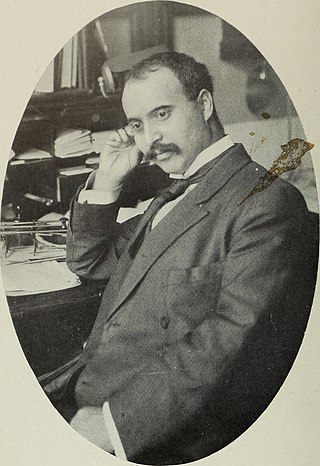
Mihran Krikor Kassabian was an Armenian-American physician, one of the early investigators into the medical uses of X-rays, and a faculty member at the Medico-Chirurgical College of Philadelphia. He became director of the Roentgen Ray Laboratory at Philadelphia General Hospital and vice president of both the American Roentgen Ray Society (ARRS) and the American Electro-Therapeutic Association.

George Edward Pfahler was an American physician and one of the early influences on the specialty of radiology.
William Ironside Bruce was a doctor in Europe who conducted early research on the use of X-rays. He headed the X-ray departments at Charing Cross Hospital and at the Hospital for Sick Children. He wrote an early book on X-ray techniques and he was president of the radiology section of the Royal Society of Medicine.
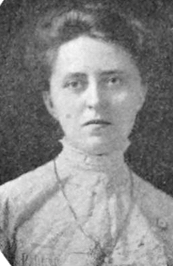
Gisela Johanna Ida von Poswik was a German-born American nurse and physician and an early specialist in radiology.
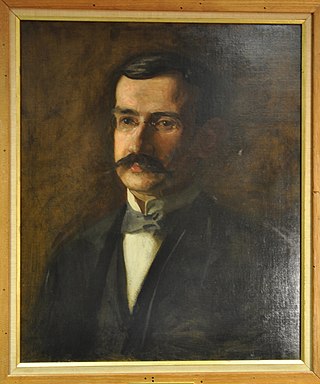
Charles Lester Leonard (1861–1913) was an American physician and X-ray pioneer. Leonard was the first radiologist at the Hospital of the University of Pennsylvania, founded the Philadelphia Roentgen Ray Society, and served as president of the American Roentgen Ray Society in 1904–1905. He was known as one of the foremost experts in urological X-ray diagnosis, and he was the first American physician to demonstrate kidney stone disease with X-rays.
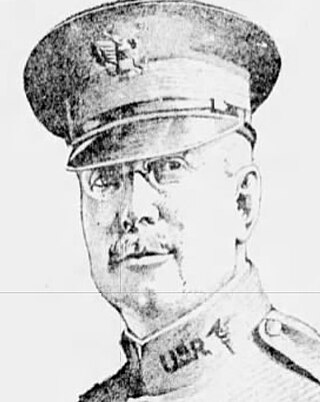
Eugene W. Caldwell (1870–1918) was an American engineer, radiographer, and physician who conducted early work on the medical uses of X-rays. A native of Missouri, Caldwell studied engineering at the University of Kansas. After working as an engineer for five years, Caldwell became interested in X-rays in 1897, opening what may have been the first X-ray clinic in New York City. He taught radiography at University and Bellevue Hospital Medical College and later graduated with a medical degree from that institution.
The British Journal of Radiology is a monthly peer-reviewed medical journal covering radiology. It is published by the British Institute of Radiology and the editors-in-chief are Simon Jackson and Andrew Nisbet. According to the Journal Citation Reports, the journal has a 2021 impact factor of 3.629.
References
- ↑ "About ARRS". American Roentgen Ray Society. Archived from the original on 2010-07-11. Retrieved 2009-09-20.
- ↑ "Lifelong Learning Center". American Roentgen Ray Society. Retrieved 2009-09-20.
- ↑ "No Danger In X-Rays Now. American Roentgen Ray Society Discusses Improvements In Treatment" (PDF). The New York Times. December 29, 1908. Retrieved 2009-09-20.